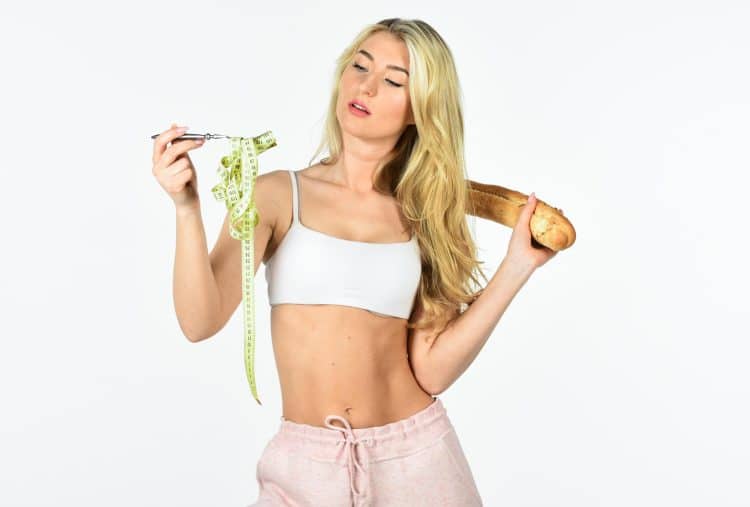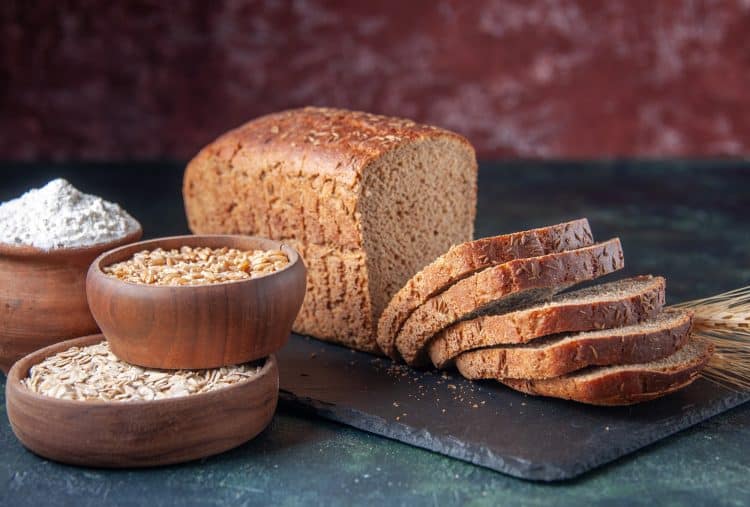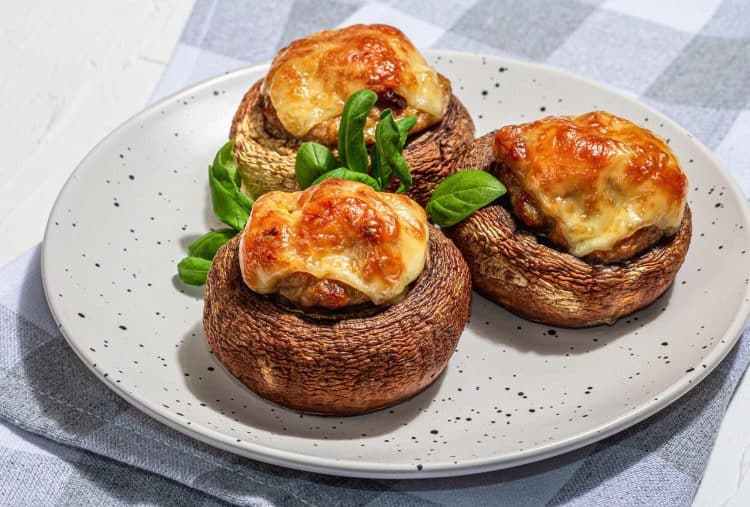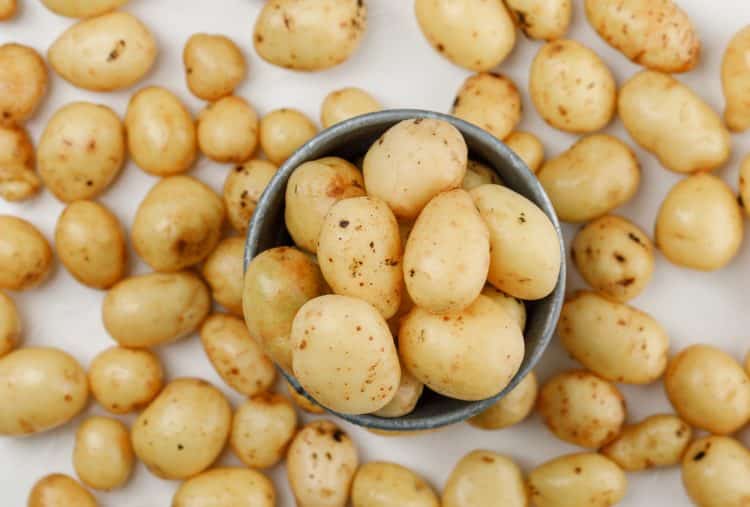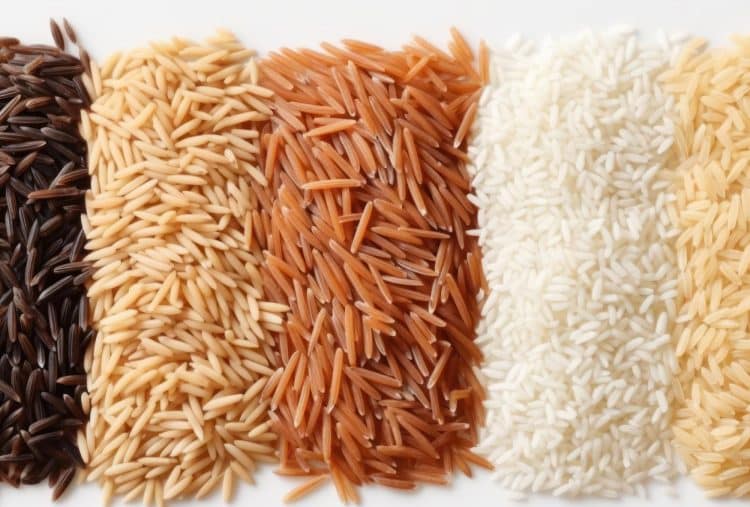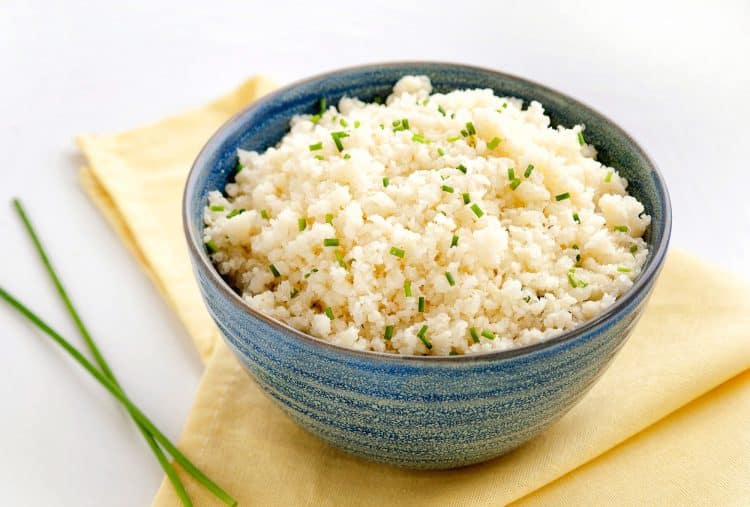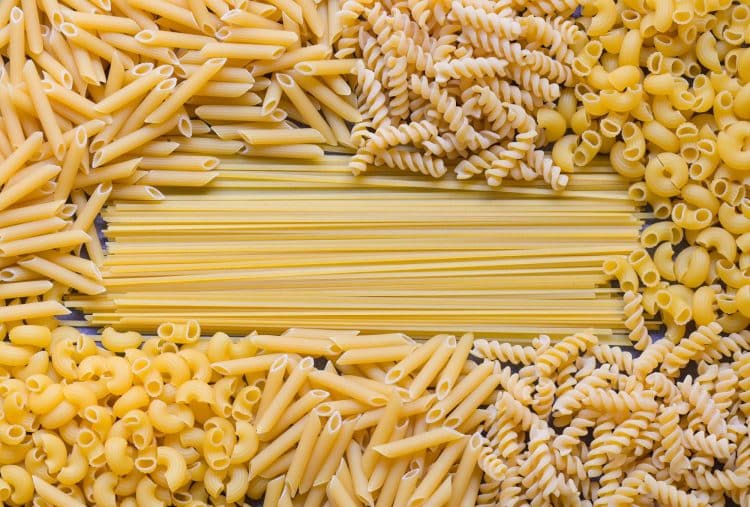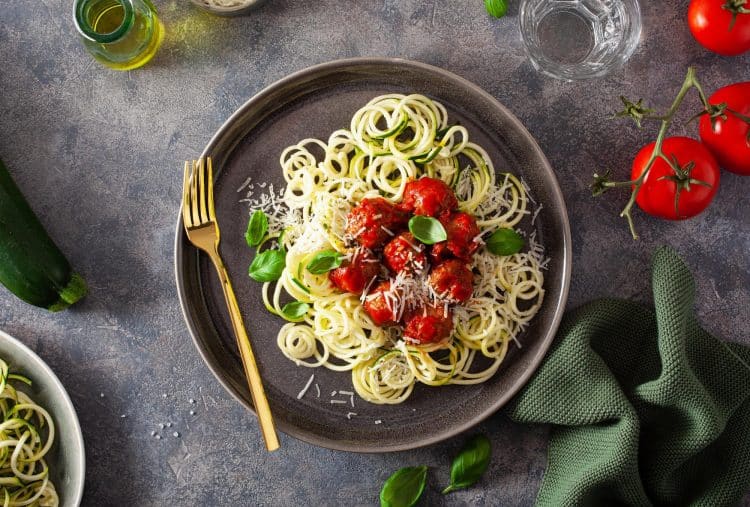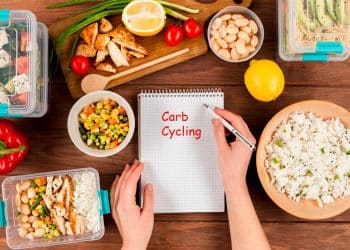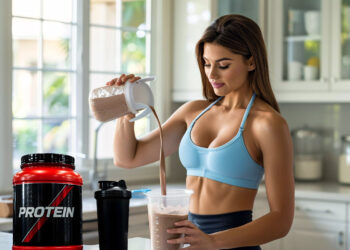I’ve been helping people lose weight and keep it off for over three decades. In fact, my very first personal training client came to me because they were struggling to lose the weight they gained during pregnancy.
Consequently, I’ve spent a lot of time studying the science and methodology of weight loss and fat burning.
I’ve concluded that calorie balance is the most critical part of losing weight. You need to eat less or exercise more to create an energy deficit. Faced with this calorie shortfall, your body has no option but to burn fat for fuel. My point of view is not unique and is supported by multiple scientific studies and research (1).
As such, it really doesn’t matter which diet you follow or what workouts you do; as long as you go “overdrawn at the calorie bank,” fat loss is all but guaranteed.
That said, some dietary methods are better than others. For example, intermittent fasting is a straightforward way to lower your calorie intake without weighing and measuring your food. Just eat a few less meals to create a calorie deficit.
Another effective method is carb restriction. In my experience, low-carb diets are particularly good for fat loss. Again, this POV is backed by science (2). However, cutting carbs from your diet can leave gaps in your meals, making low-carb diets difficult to stick to.
Level Up Your Fitness: Join our 💪 strong community in Fitness Volt Newsletter. Get daily inspiration, expert-backed workouts, nutrition tips, the latest in strength sports, and the support you need to reach your goals. Subscribe for free!
The good news is that low-carb diets don’t have to be ultra-restrictive, and there are foods you can use to replace those beloved high-carb staples.
In this article, I reveal my favorite low-carb alternatives to bread, potatoes, rice, and pasta.
- How Cutting Carbs Can Help You Lose Weight
- Low-Carb Bread Alternatives
- Low-Carb Potato Alternatives
- Low-Carb Rice Alternatives
- Low-Carb Pasta Alternatives
- FAQs
- Closing Thoughts
How Cutting Carbs Can Help You Lose Weight
Before I reveal the best low-carb alternatives for things like bread, rice, and pasta, it’s important to state that carbs are not inherently fattening or unhealthy. In fact, some are very good for you. Unrefined high-carb foods contain an abundance of fiber, vitamins, and minerals, and provide a good source of energy.
That said, high-carb foods are often highly calorific, and consuming them makes it much harder to create that all-important calorie deficit.
For example, a cup of cooked rice contains about 200 calories, while two slices of bread come in at about 160. While these values might sound small, they quickly add up, especially if you eat carbs at every meal.
Cutting carbs will automatically lower your calorie intake. A few adjustments could create a 400-500 calorie deficit, which is enough to lose about one pound per week. In addition, low-carb diets can help balance your blood sugar, resulting in a more stable appetite and energy levels (2).
The Downside of Cutting Carbs
While reducing your carb intake is an effective weight-loss strategy, it’s not perfect. In my experience, the biggest issue is that it involves eliminating several staple foods from your diet. Namely bread, rice, pasta, and potatoes.
This leaves a lot of people asking the question, “So what do I eat instead?” After all, what is a sandwich without bread, pizza without the base, or a burger without the bun?
While you could simply “suck it up” and ignore the foods missing from your plate, in my experience, this makes meals less appetizing. Food is one of life’s pleasures, and taking the enjoyment out of eating is a crime against humanity!
Consequently, I prefer to replace high-carb foods with low-carb alternatives. This makes low-carb dieting much more tolerable. It’s easier to stick to a diet you enjoy, and I’ve found that, after a brief adjustment period, you can learn to enjoy low-carb alternatives. Although, they may seem unconventional at first.
So, whether you are going full keto or just want an easy way to cut calories from your diet, the low-carb alternatives in the following sections will help you lose weight and get lean.
Find your daily carb intake using our calculator.
Low-Carb Bread Alternatives
Of all the high-carb staples, bread is arguably the hardest to give up. Some people consider themselves addicted to bread and have it with every meal. The lack of bread has caused riots, and it’s sometimes known as the “staff of life.” Bread even features many times in the Bible.
I don’t think you must give up bread to lose weight. However, I recognize that eating less is an easy way to lower your overall calorie intake. This is especially true if you consume bread in large amounts.
So, with that in mind, here are my favorite low-carb bread alternatives.
Lettuce leaves
Lettuce might sound like an odd bread alternative, but it actually works really well. Instead of making wraps with flatbread or tortillas, use lettuce leaves. This strategy slashes the calorie intake of your meal while preserving those delicious fillings. You can also use seaweed sheets for the same purpose.
Portobello mushroom caps
I love a good burger! They’re a regular weekend treat. Topped with cheese and relish, they’re one of my dietary highlights. The bun, however, is a carb bomb waiting to explode! So, to lower the carb content, replace the high-carb burger buns with lightly grilled portobello mushroom caps.
I actually discovered this strategy when helping my wife prepare for her first bodybuilding show. I ate bread buns, and she had mushroom caps. She won her event, and this carb-saver helped her stay sane during her diet.
Eggplant slices
Eggplant, also known as aubergine, has a dense texture, making it the ideal replacement for bread. Simply slice, season, grill, and use eggplant in place of bread for sandwiches. Top with cheese for a tasty but low-carb snack. This is an absolute favorite in my household, and it’s even a hit with my non-fitness-minded family and friends.
Cloud bread
There are lots of recipes online for low-carb bread, and most supermarkets carry it, too. However, homemade versions often use high-calorie ingredients like almond flour, so they won’t do much for weight loss. Conversely, the store-bought versions can be expensive.
Cloud bread is easy to make and pretty cheap. It’s low in carbs and tastes good, too. If you want a close replacement for real bread, this is a good option.
Ingredients:
- 3 large eggs
- 3 tablespoons cream cheese
- ¼ teaspoon baking powder
- 1 tablespoon sweetener of choice (e.g., sugar, honey, or a sugar substitute)
- Pinch of salt
Instructions:
- Preheat your oven to 300°F (150°C) and line a baking sheet with parchment paper.
- Separate the egg whites from the yolks, placing them in individual bowls.
- Using an electric mixer, whip the egg whites until stiff peaks form.
- In a separate bowl, mix the egg yolks with the cream cheese until smooth.
- Gently fold the whipped egg whites into the yolk and cream cheese mixture until well combined. Take care not to deflate the egg whites.
- Sprinkle in the baking powder and add the sweetener of your choice. Gently fold the ingredients together.
- Spoon the mixture onto the prepared baking sheet, forming cloud-like shapes. Keep them about 1 inch (2.5 cm) thick.
- Bake in the oven for approximately 25-30 minutes or until golden brown.
- Allow the cloud bread to cool on the baking sheet for a few minutes, then transfer to a wire rack to cool completely.
Nutritional breakdown per serving:
- Calories: 50
- Protein: 3g
- Fat: 4g
- Carbohydrates: 1g
- Fiber: 0g
- Sugar: 1g
Low-Carb Potato Alternatives
Potatoes are a dietary staple for many people. They’re tasty, filling, versatile, and a good source of nutrients. Unfortunately, potatoes are also very calorific, especially for a vegetable. And, before you ask, sweet potatoes aren’t much better. As such, you may be tempted to stop eating them.
For some people, a meal without potatoes is barely a meal at all. They can be hard to give up if you’re used to eating them regularly. Thankfully, there are several lower-carb alternatives you can eat instead.
Zucchini chips
Who doesn’t like to eat potato chips while watching a movie? However, it’s all too easy to consume a massive number of calories when distracted by what’s happening on the screen.
Zucchini or courgetti chips are much lower in carbs and calories and, in addition, far higher in fiber and micronutrients. Plus, because you make them yourself, they’re free of the usual additives that you’ll find in most mass-produced snack foods.
To make zucchini chips, thinly slice your zucchini and then place the slices on a lightly oiled backing sheet. Season and then bake at a high temperature until brown and crispy. Good toppings include sea salt and black pepper, smoked paprika, chili flakes, or garlic powder.
Not a zucchini fan? No problem! Other vegetables that work equally well include radishes, kale, and rutabaga.
Cauliflower mash
Do you enjoy mashed potatoes? I know I do! They’re a great comfort food and the ideal accompaniment to many meals. It’s a shame that mashed potatoes are so carb-dense and calorific.
Replace mashed potatoes with cauliflower mash. The texture is similar, but the carb and calorie content are considerably lower. Just boil the cauliflower until it’s tender, drain well, and then mash with a little butter and milk. Season to taste, and you’re good to go.
Celeriac (celery root)
Looking for an alternative for potatoes that you can just swap one for one? Try celeriac! You can cook this root vegetable the same way you cook potatoes, making it the ideal low-carb replacement. Cut into chunks and roast it, mash it, shallow fry it, or make fries – just use celeriac whenever you usually use potatoes.
Carrot fries
While they should never be considered a dietary staple, many people enjoy French fries. Made from potatoes and deep-fried, French fries are very calorific and are loaded with carbs. However, they’re super-tasty and the perfect accompaniment to many meals.
Carrot fries are much lower in calories and carbs and contain more essential vitamins and minerals. Simply slice a few carrots into French fry-sized pieces and deep or air fry them to crispy perfection. Season with a little salt, and enjoy.
Level Up Your Fitness: Join our 💪 strong community in Fitness Volt Newsletter. Get daily inspiration, expert-backed workouts, nutrition tips, the latest in strength sports, and the support you need to reach your goals. Subscribe for free!
Alternatively, try zucchini fries, which are equally low in calories and carbs.
Low-Carb Rice Alternatives
Rice is a staple of Mexican and Asian cooking. It’s easy to prepare, very versatile, and cheap, too. Unfortunately, while rice is a healthy enough foodstuff, it’s also high in carbs and, therefore, loaded with calories. A cup or two of rice with a meal can completely derail your weight loss efforts.
I really like rice and am reluctant to give it up. However, these low-carb rice alternatives taste so good that I don’t feel deprived.
Konjac rice
Konjac rice comes from konjac yams, and you’ll find it in most health food stores and some supermarkets. Also known as miracle rice and shirataki rice, konjac rice is very low in calories and carbs and cooks in just 2-3 minutes. It’s packed full of fiber, so it’s very filling, too.
On the downside, konjac rice is very bland, so make sure you serve it alongside flavorsome meals or season it well to make it tastier.
Cauliflower rice
Cauliflower rice is my go-to low-carb rice replacement. It’s very filling, extremely low in calories, and it takes next to no time to prepare.
To make cauliflower rice, simply grate a few heads of cauliflower into rice-like pieces. Then boil in salted water for a couple of minutes to soften. Alternatively, add it directly to your meal, e.g., curries, stir-fries, etc. However, cauliflower rice cooks very quickly, so don’t add it until you’re about to serve.
Want a splash of color in your rice? You can also use grated broccoli as a rice alternative.
Spaghetti squash rice
Cut open a spaghetti squash, and you’ll find the middle full of the fibrous strands that give this vegetable its name. These strands can be cooked and eaten as they are, making a great low-carb alternative to pasta. Alternatively, you can chop the strands into small pieces in a food processor to make a rice substitute.
Spaghetti squash rice is perfect for meals where you cook the rice as part of the main dish, e.g., curries and stir-fries.
Zucchini rice
Zucchini is arguably the MVP of low-carb vegetables. It’s so versatile that you can probably find a way to use zucchini to replace most high-carb foods. You’ll even find them in sweet recipes.
So, take a zucchini, wash it, and then finely chop or grate it into rice-sized pieces. Season and cook it quickly to create a light and tasty low-carb rice alternative.
Low-Carb Pasta Alternatives
Pasta is another high-carb food that many people cannot live without. Quick and easy to cook, pasta is high in carbs and calories but relatively low in nutrients. As such, it’s a food that many of us should probably eat less of.
Here are my favorite low-carb pasta alternatives.
Cabbage-hetti
As you’ve probably guessed, cabbage-hetti is spaghetti made from thinly shredded cabbage. You can use a sharp knife to shred cabbage into noodles or a food processor with the appropriate attachment.
Like spiralized zucchini, cabbage-hetti is incredibly low in carbs and calories, very filling, and cooks in minutes.
Spiralized zucchini
I’ve got a lot of kitchen gadgets, but my spiralizer is probably my favorite. This handy tool turns almost any vegetable into low-carb noodles that I then use instead of pasta. While you can spiralize most firm-textured veggies, zucchini works especially well.
As well as being very low in carbs and calories, spiralized zucchini is filling and cooks in seconds. Alternatively, you can eat it raw. Try doing that with real pasta!
Eggplant lasagna sheets
It’s not just Garfield, the overweight cat who likes lasagna! This popular pasta dish is tasty and satisfying and goes great with a big slice of garlic bread and a green salad. It’s a shame, then, that it’s so high in calories and carbs.
Replace the pasta lasagna sheets with sliced eggplant to slash the carb content of your meal without running the flavor. This creates something akin to Greek moussaka, which also uses layers of eggplant.
Edamame noodles
Edamame are young green soya beans. They’re naturally high in protein and fiber but low in calories, carbs, and fat. As such, they’re a staple for many vegetarians and vegans, and are something of a nutritional superfood.
You can buy edamame noodles in various shapes, making them the ideal replacement for most types of pasta. They’re available from health food stores and supermarkets.
Read also: 8 Foods You Thought Were Unhealthy That Are Actually Good for You!
FAQs
Do you have a question about low-carb alternatives? No problem, because I’ve got the answers! Need more information? Drop me a line in the comments section below, and I’ll get back to you ASAP.
1. Are these low-carb alternatives healthy and safe?
In most cases, I’d say the low-carb alternatives I’ve listed above are healthier than the foods you are replacing. Most come from vegetables, so they’re naturally high in vitamins and minerals despite being lower in carbs and calories.
Regarding their safety, that depends on how you prepare these foods and your general kitchen hygiene. Always wash your hands and the ingredients before cooking, don’t use them if they’re out-of-date, and avoid preparing vegetables on the same surface you use for raw meat to prevent cross-contamination.
Providing you adhere to the rules of good food hygiene, all of these low-carb alternatives should be perfectly safe.
2. Will these low-carb alternatives help me lose weight?
Replacing bread, rice, pasta, and potatoes with low-carb alternatives should help you lose weight. However, that’ll only happen if these changes result in a calorie deficit. If you are still consuming more calories than you need, your weight won’t decrease, and you may even gain weight.
So, use these low-carb foods to lower your overall calorie intake and avoid compensating elsewhere in your diet by adding foods you don’t normally eat.
3. Do I have to cut carbs to lose weight?
Cutting carbs is just one way you can create a calorie deficit to lose weight. It’s an effective strategy for some people but may not work for everyone. Other options include:
- Reducing the size of your meals
- Lowering your fat and sugar intake
- Eating fewer meals per day
- Eliminating certain foods or food groups
- Not snacking between meals
- Counting calories
Ultimately, the best way to lose weight is the method you can stick to. This is why there is no “perfect diet” that works for everybody.
Related: How to Fix Your Diet Forever in Six Weeks
4. What’s the difference between keto and low-carb dieting?
Keto and low-carb dieting share some similarities but are different enough that they should be considered separately.
Keto is short for ketogenic. This diet limits your carb intake to 50 grams per day or less. Such a low carb intake puts you into a state called ketosis, where your body uses ketones instead of glucose for energy. Keto is an extreme diet but can cause rapid weight loss.
In contrast, most low-carb diets limit your carbohydrate intake to around 150 grams per day. While this is still restrictive, it’s usually more manageable than going “full keto.” However, you will still need to modify your diet, usually cutting back on high-carb staples like bread, rice, and pasta.
Both keto and low-carb diets can help you lose weight and burn fat. However, keto is very strict, while low carb is generally more flexible and forgiving.
5. What low-carb breakfasts can you suggest for someone who normally eats cereal?
Cereal is a breakfast staple that’s also high in carbs and calories. Even oatmeal, while very healthy, is high in carbs. That doesn’t mean all cereals are unhealthy, but they’re not typically compatible with a low-carb diet.
Alternative breakfasts that won’t derail your low-carb diet include:
- Scrambled eggs and bacon
- Avocado slices and smoked salmon
- Vegetable omelet
- Plain Greek yogurt and mixed berries
- Chia seed pudding with chopped nuts and berries
Closing Thoughts
There are lots of diets that can help you lose weight and burn fat. However, in my experience, and that of my clients, low-carb eating plans are among the best.
Cutting carbs automatically reduces your calorie intake. And, providing you don’t compensate by adding other foods to your meals, eating fewer carbs invariably leads to weight loss.
However, while going low carb means avoiding the high-carb foods that most people consider staples, there are still plenty of things you can eat instead. For example, mashed cauliflower is an excellent alternative to mashed potatoes, while spiralized zucchini is the ideal replacement for pasta.
Do you have to go low carb to lose weight? Absolutely not! But cutting back on calorific, carb-dense foods like pasta and potatoes is one of the easiest ways to shed those excess pounds.
References:
- Kim JY. Optimal Diet Strategies for Weight Loss and Weight Loss Maintenance. J Obes Metab Syndr. 2021 Mar 30;30(1):20-31. doi: 10.7570/jomes20065. PMID: 33107442; PMCID: PMC8017325.
- Oh R, Gilani B, Uppaluri KR. Low-Carbohydrate Diet. [Updated 2023 Aug 17]. In: StatPearls [Internet]. Treasure Island (FL): StatPearls Publishing; 2023 Jan.

